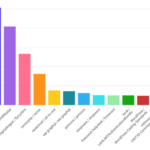 How to secure PHP website from hackers: Safeguarding your PHP website may seem like an Everest-sized challenge, given the endless list of potential vulnerabilities.
How to secure PHP website from hackers: Safeguarding your PHP website may seem like an Everest-sized challenge, given the endless list of potential vulnerabilities.
Sure, the complexity of security protocols can be overwhelming, especially with the constant emergence of new threats…
I’ve honed a set of practical measures that can drastically improve your site’s security without a degree in cybersecurity. I can offer a roadmap that simplifies PHP security, making it accessible even to rookies.
Input Validation and Sanitization
Ensure that all user input is properly validated and sanitized. This means checking input against strict rules for type, length, format, and range.
Use regular expressions for complex validations and reject inputs that don’t meet criteria. Functions like htmlspecialchars() and filter_var() can help in preventing Cross-Site Scripting (XSS) attacks and sanitizing different types of input.
Here are some code samples and explanations for different types of validation and sanitization:
1. Basic String Validation
To check if an input is a valid string, you might use the filter_var() function with the FILTER_SANITIZE_STRING filter. This removes tags and encode special characters from the string.
$input = "<script>alert('test');</script>";
$sanitized_input = filter_var($input, FILTER_SANITIZE_STRING);
echo $sanitized_input; // Outputs: alert('test');2. Email Validation
For email validation, filter_var() is again useful. The FILTER_VALIDATE_EMAIL filter checks if the string is a valid email format.
$email = "test@example.com";
if (filter_var($email, FILTER_VALIDATE_EMAIL)) {
echo "Valid email address";
} else {
echo "Invalid email address";
}3. Integer Validation
To validate if an input is an integer, use filter_var() with FILTER_VALIDATE_INT.
$number = "123";
if (filter_var($number, FILTER_VALIDATE_INT) !== false) {
echo "Valid integer";
} else {
echo "Invalid integer";
}4. URL Validation
To validate URLs, use FILTER_VALIDATE_URL with filter_var().
$url = "http://www.example.com";
if (filter_var($url, FILTER_VALIDATE_URL)) {
echo "Valid URL";
} else {
echo "Invalid URL";
}5. SQL Injection Prevention
For SQL injection prevention, use prepared statements with bound parameters. This is especially important for any data inserted into a database.
$stmt = $pdo->prepare("SELECT * FROM users WHERE email = :email AND status=:status");
$stmt->execute(['email' => $email, 'status' => $status]);6. XSS Prevention
To prevent Cross-Site Scripting (XSS) attacks, use htmlspecialchars() when outputting data that came from user input.
echo htmlspecialchars($input, ENT_QUOTES, 'UTF-8');7. Custom Regular Expression Validation
For more complex validations, like a specific format, use regular expressions with preg_match().
if (preg_match("/^[a-zA-Z0-9]*$/", $username)) {
echo "Valid username";
} else {
echo "Invalid username";
}In each of these cases, the goal is to ensure that the input data conforms to expected patterns or types, and to sanitize it to prevent malicious intent. Regular updates and audits of validation logic are important to adapt to new threats and best practices.
Secure Password Handling
Use strong hashing algorithms like Argon2 or bcrypt for password storage, and avoid outdated ones like MD5 or SHA1. When hashing passwords, consider the balance between the cost and strength of the algorithm.
Secure password handling in PHP is critical for protecting user information. This involves using strong, one-way hashing algorithms to store passwords. PHP provides built-in functions for this purpose, notably password_hash() and password_verify().
Here are some code samples illustrating how to use these functions:
Hashing Passwords
When a user creates an account or changes their password, you should hash the password before storing it in your database. The password_hash() function does this:
$userPassword = 'UserPassword123'; // The password entered by the user
$hashedPassword = password_hash($userPassword, PASSWORD_DEFAULT);
// Store $hashedPassword in your databaseVerifying Passwords
When a user logs in, you need to verify the password they enter against the hashed password stored in the database. This is done using password_verify():
$userPassword = 'UserPassword123'; // The password entered by the user
$hashedPassword = '$2y$10$someRandomlyGeneratedHashValue';
// Hashed password retrieved from your database
if (password_verify($userPassword, $hashedPassword)) {
// The passwords match, proceed with login
} else {
// The passwords do not match, deny access
}Password Hashing Options
The password_hash() function allows you to specify options. For example, you can set the cost of the algorithm, which determines how much time is needed to hash the password. A higher cost means more time and computational power is required, which makes the hash more secure but also slower to generate:
$options = [
'cost' => 12, // The cost parameter can range from 4 to 31
];
$hashedPassword = password_hash($userPassword, PASSWORD_DEFAULT, $options);Rehashing Passwords
When PHP’s password hashing API is updated, or if you want to change the hashing options, you should rehash passwords. You can use password_needs_rehash() to check if a password needs to be rehashed:
$options = ['cost' => 12];
if (password_needs_rehash($hashedPassword, PASSWORD_DEFAULT, $options)) {
// If the password needs rehashing, generate a new hash and update your database
$newHashedPassword = password_hash($userPassword, PASSWORD_DEFAULT, $options);
// Update the password in your database
}Remember, the security of passwords is paramount in any application. It’s important to keep your hashing algorithms up to date and to use the provided PHP functions correctly to ensure maximum security.
Implement SSL/TLS for HTTPS
Use SSL certificates to establish secure communication channels. This protects data during transmission and ensures users are connecting to your genuine server.
Implementing SSL/TLS for HTTPS in a PHP website is essential for secure communication between the client (browser) and the server. This process involves obtaining an SSL certificate, configuring your web server to use the certificate, and then ensuring that your PHP website uses HTTPS URLs.
Here’s a basic outline of the steps with some code examples where applicable:
1. Obtain an SSL Certificate
- You can purchase an SSL certificate from a Certificate Authority (CA) or get a free one from services like Let’s Encrypt.
- Once you have the certificate, you’ll receive files like certificate.crt, private.key, and possibly ca_bundle.crt.
2. Configure Your Web Server
- The exact steps depend on your web server (Apache, Nginx, etc.). Below are basic configurations for Apache and Nginx.
Apache Configuration
Edit your Apache configuration file (e.g., httpd.conf or apache2.conf) or create a new config file in sites-available:
<VirtualHost *:443>
ServerName www.yourdomain.com
SSLEngine on
SSLCertificateFile /path/to/your/certificate.crt
SSLCertificateKeyFile /path/to/your/private.key
SSLCertificateChainFile /path/to/your/ca_bundle.crt
DocumentRoot /path/to/your/website
</VirtualHost>Restart Apache to apply the changes:
sudo systemctl restart apache2Nginx Configuration
Edit your Nginx config file (usually found in /etc/nginx/sites-available):
server {
listen 443 ssl;
server_name www.yourdomain.com;
ssl_certificate /path/to/your/certificate.crt;
ssl_certificate_key /path/to/your/private.key;
ssl_protocols TLSv1 TLSv1.1 TLSv1.2;
ssl_ciphers HIGH:!aNULL:!MD5;
...
}Restart Nginx to apply the changes:
sudo systemctl restart nginx3. Update PHP Website to Use HTTPS
- Ensure all internal links, resource references, and form submissions use https://.
- You can force HTTPS in PHP by checking the protocol and redirecting if necessary:
if ($_SERVER['HTTPS'] != "on") {
$redirect = "https://" . $_SERVER['HTTP_HOST'] . $_SERVER['REQUEST_URI'];
header("Location:$redirect");
exit();
}4. Implement HTTP to HTTPS Redirect
- In your web server configuration, set up a rule to redirect all HTTP requests to HTTPS.
Apache Redirect
Add this to your .htaccess file:
RewriteEngine On
RewriteCond %{HTTPS} off
RewriteRule ^(.*)$ https://%{HTTP_HOST}%{REQUEST_URI} [L,R=301]Nginx Redirect
Add this to your server block:
server {
listen 80;
server_name www.yourdomain.com;
return 301 https://$server_name$request_uri;
}
5. Regularly Renew SSL Certificates
- Set reminders to renew your SSL certificates as they have expiration dates.
Remember, SSL/TLS configuration can be server and system-specific, so it’s always good to refer to the official documentation or guidelines provided by your web hosting service for precise steps. Additionally, consider the security settings like cipher suites and SSL protocols to ensure a secure setup.
Prevent SQL Injection
Utilize prepared statements with parameterized queries to prevent SQL injection attacks. This is crucial for protecting your database from unauthorized access.
Preventing SQL Injection in PHP is crucial for securing your website’s database. SQL Injection attacks involve inserting or “injecting” malicious SQL statements into an entry field for execution. To prevent these attacks, you should use prepared statements and parameterized queries.
These techniques ensure that SQL statements are sent to and parsed by the database server separately from any parameters.
Using PDO (PHP Data Objects) for Prepared Statements
PDO provides a consistent way to access databases in PHP and supports prepared statements, which can prevent SQL Injection.
Example of a PDO Prepared Statement:
<?php
$pdo = new PDO('mysql:host=your_host;dbname=your_db', 'username', 'password');
$stmt = $pdo->prepare("SELECT * FROM users WHERE email = :email");
// Bind a value to a named parameter in the prepared statement
$stmt->bindParam(':email', $email);
// Execute the statement
$stmt->execute();
// Fetch the result
while ($row = $stmt->fetch()) {
print_r($row);
}
?>In this example, :email is a placeholder for the actual email value that will be bound to the statement before execution.
This separation of SQL code and data input prevents the execution of unintended SQL commands.
Using MySQLi for Prepared Statements
MySQLi also supports prepared statements and is a good option if your application uses MySQL exclusively.
Example of a MySQLi Prepared Statement:
<?php
$mysqli = new mysqli("your_host", "username", "password", "your_db");
$stmt = $mysqli->prepare("SELECT * FROM users WHERE email = ?");
$stmt->bind_param("s", $email); // "s" indicates the type is string
$stmt->execute();
$result = $stmt->get_result();
while ($row = $result->fetch_assoc()) {
print_r($row);
}
$stmt->close();
?>In this MySQLi example, ? is a placeholder for the email value. The bind_param() function is used to bind the $email variable to the SQL statement.
General Tips for Preventing SQL Injection:
- Always Use Prepared Statements: They are the most effective way to prevent SQL Injection.
- Escape User Inputs: If you can’t use prepared statements, use the appropriate escaping function (mysqli_real_escape_string() for MySQLi or PDO::quote() for PDO).
- Limit Privileges: Restrict the database user’s privileges to only what’s necessary.
- Validate and Sanitize Input: Ensure user inputs are what you expect (numbers, strings, etc.) and remove any unnecessary characters.
Implementing these practices in your PHP applications will significantly increase your defense against SQL Injection attacks. Remember that security is an ongoing process, and you should always stay updated with the latest practices and updates in PHP and database management.
Session Security
Protect against session hijacking by binding sessions to IP addresses and regenerating session IDs post-login. Implement HttpOnly and SameSite attributes for cookies to further enhance security.
Session security in PHP is crucial for protecting user data and preventing unauthorized access. Here are some best practices and code samples for enhancing session security:
1. Use Secure Session Cookies
Marking session cookies as secure ensures they are only sent over HTTPS, which is important for preventing session hijacking.
ini_set('session.cookie_secure', 1);
session_start();2. Use HTTP-Only Cookies
Setting cookies to HTTP-Only prevents JavaScript from accessing them, reducing the risk of XSS attacks.
ini_set('session.cookie_httponly', 1);
session_start();3. Regenerate Session ID
Regenerate the session ID upon login to prevent session fixation attacks.
session_start();
// Validate user login here
session_regenerate_id(true);4. Set Custom Session Save Path
Setting a custom session save path that is not accessible via the web can enhance security.
ini_set('session.save_path', '/path/to/your/sessions');
session_start();5. Set Session Expiration
You can set a custom session expiration time to automatically log users out after a certain period of inactivity.
ini_set('session.gc_maxlifetime', 3600); // Set to 1 hour
session_start();
// Check if the session is expired
if (isset($_SESSION['last_activity']) && (time() - $_SESSION['last_activity']
> 3600)) {
// Destroy session and redirect to login
session_unset();
session_destroy();
}
$_SESSION['last_activity'] = time(); // Update last activity time stamp6. Store Session IDs Securely
Avoid storing session IDs in places that are easily accessible, like URLs.
ini_set('session.use_only_cookies', 1);
session_start();7. Validate User Agent
You can store the user’s browser info in the session and check it on each request to prevent session hijacking.
session_start();
if (!isset($_SESSION['user_agent'])) {
$_SESSION['user_agent'] = $_SERVER['HTTP_USER_AGENT'];
} elseif ($_SESSION['user_agent'] !== $_SERVER['HTTP_USER_AGENT']) {
// Possible session hijacking attempt
session_unset();
session_destroy();
}8. Implement Cross-Site Request Forgery (CSRF) Protection
Generate a unique token for forms and verify it on submission.
session_start();
// Generate CSRF token
if (!isset($_SESSION['csrf_token'])) {
$_SESSION['csrf_token'] = bin2hex(random_bytes(32));
}
// Include this token as a hidden field in your forms
// <input type="hidden" name="csrf_token" value="<?php echo $_SESSION['csrf_token'];
?>">
// Verify the CSRF token on form submission
if (isset($_POST['csrf_token']) && $_POST['csrf_token'] !== $_SESSION['csrf_token'])
{
// Invalid CSRF token, handle the error
}Remember, session security is a critical aspect of web application security. Always stay updated with the latest security practices and implement multiple layers of security to protect your users’ data.
Secure File Uploads
Validate file types, scan for malware, and store uploaded files outside the web root directory. Use functions like mime_content_type() for file type validation.
Securing file uploads in PHP is essential to prevent malicious files from compromising your server.
Here are several best practices with code examples:
1. Check File MIME Type
It’s important to check the MIME type of the uploaded file to ensure it’s of an expected type.
$allowedMimeTypes = ['image/jpeg', 'image/png', 'application/pdf'];
$finfo = finfo_open(FILEINFO_MIME_TYPE);
$fileMimeType = finfo_file($finfo, $_FILES['uploaded_file']['tmp_name']);
if (!in_array($fileMimeType, $allowedMimeTypes)) {
die("Invalid file type!");
}2. Validate File Extension
In addition to MIME type, check the file extension:
$allowedExtensions = ['jpg', 'jpeg', 'png', 'pdf'];
$uploadedFileName = $_FILES['uploaded_file']['name'];
$uploadedFileExtension = strtolower(pathinfo($uploadedFileName, PATHINFO_EXTENSION));
if (!in_array($uploadedFileExtension, $allowedExtensions)) {
die("Invalid file extension!");
}3. Limit File Size
Restrict the size of the files to prevent denial-of-service (DoS) attacks through large file uploads.
$maxFileSize = 5 * 1024 * 1024; // 5MB
if ($_FILES['uploaded_file']['size'] > $maxFileSize) {
die("File size is too large!");
}4. Use move_uploaded_file()
Always use move_uploaded_file() to move the uploaded file to a new location. This function checks if the file is a valid upload.
$uploadDir = '/path/to/your/uploads/directory/';
$uploadedFilePath = $uploadDir . basename($_FILES['uploaded_file']['name']);
if (move_uploaded_file($_FILES['uploaded_file']['tmp_name'], $uploadedFilePath)) {
echo "File uploaded successfully!";
} else {
die("Error uploading file.");
}5. Store Files Outside Web Root
Store uploaded files outside the web root to prevent direct access. Serve them through a PHP script that checks for proper authentication and permissions.
// Assume $filePath is the path to the stored file outside the web root
if (userHasPermissionToViewFile($filePath)) {
header('Content-Type: application/octet-stream');
header('Content-Disposition: attachment; filename="' . basename($filePath) . '"');
readfile($filePath);
}6. Rename Uploaded Files
Rename files on upload to avoid any executable names or overwrite existing files.
$newFileName = uniqid() . '.' . $uploadedFileExtension;
$uploadedFilePath = $uploadDir . $newFileName;
if (move_uploaded_file($_FILES['uploaded_file']['tmp_name'], $uploadedFilePath)) {
echo "File uploaded successfully with new name $newFileName";
} else {
die("Error uploading file.");
}7. Implement Anti-virus Scanning
Consider integrating anti-virus scanning for uploaded files, especially if users can upload executable files or documents.
These measures, when combined, greatly enhance the security of file uploads in PHP applications.
It’s also important to keep your PHP version and any libraries you use up-to-date to protect against known vulnerabilities.
Configuration and Error Handling

Keep PHP and other software up-to-date. Turn off error displaying in production environments and log errors for review. Proper configuration of your php.ini file is essential for security.
Proper configuration and error handling in PHP are vital for maintaining security and smooth operation.
Here are some best practices with examples:
Configuration Best Practices
1. Disabling display_errors
In a production environment, it’s important to turn off error reporting to the screen to prevent sensitive information exposure.
ini_set('display_errors', 0);
error_reporting(E_ALL);2. log_errors and Error Log Path
Enable error logging and specify the path to your error log file. This helps in monitoring and troubleshooting without exposing errors to users.
ini_set('log_errors', 1);
ini_set('error_log', '/path/to/php-error.log');3. Limiting File Upload Size
In your php.ini, you can set limits on the size of file uploads:
upload_max_filesize = 10M
post_max_size = 10M4. Restricting Remote Code Execution
Disable allow_url_fopen and allow_url_include in your php.ini to prevent the inclusion of remote files, which can be a security risk.
allow_url_fopen = Off
allow_url_include = Off5. Session Configuration
Secure your session configuration to prevent session hijacking:
session.cookie_httponly = 1
session.cookie_secure = 1
session.use_only_cookies = 1Error Handling Best Practices
1. Custom Error Handler
Implement a custom error handler to handle errors gracefully.
function customErrorHandler($errno, $errstr, $errfile, $errline) {
// Log error or send it to an external system
// Don't display sensitive error data to the user
}
set_error_handler("customErrorHandler");2. Exception Handling
Use try-catch blocks to manage exceptions and prevent script termination due to unhandled exceptions.
try {
// Code that may throw an exception
} catch (Exception $e) {
error_log($e->getMessage());
// Handle exception, like showing a user-friendly error message
}3. Reporting Critical Errors
For critical errors, such as database connection failures, log the error and inform the user appropriately without revealing sensitive details.
try {
// Attempt database connection
} catch (PDOException $e) {
error_log($e->getMessage());
// Display a generic error message to the user
}Security Headers
Setting security headers in PHP can help mitigate certain types of attacks:
header('X-Frame-Options: DENY');
header('X-Content-Type-Options: nosniff');
header('Content-Security-Policy: default-src \'self\'');Implementing these configuration and error handling strategies helps to secure your PHP application and provide better user experience in case of errors. Remember to regularly review and update your configurations according to the latest best practices and security guidelines.
Regular Security Audits
Perform regular audits to identify and fix vulnerabilities. Tools like OWASP ZAP or Burp Suite can be used for security scans and vulnerability assessments.
Regular security audits are essential to identify and mitigate potential vulnerabilities in your PHP applications. This process involves several steps, including code review, using security scanners, and staying updated with security patches.
Here’s how you can conduct regular security audits with some examples:
1. Code Review
Manual code review by experienced developers is invaluable. Look for common security issues like SQL injection, XSS, CSRF vulnerabilities, and improper error handling.
Example:
- SQL Injection: Ensure all database queries use prepared statements.
- XSS: Check that all user input displayed in the browser is properly escaped.
- CSRF: Verify that forms have CSRF tokens implemented.
2. Use Security Scanners
Automated tools can help you identify common vulnerabilities.
OWASP ZAP (Zed Attack Proxy)
OWASP ZAP is a free, open-source security scanner. You can configure it to automatically scan your website for vulnerabilities.
# Example of running OWASP ZAP from the command line
zap-cli quick-scan --self-contained --start-options '-config api.disablekey=
true' http://yourwebsite.comPHPStan or Psalm for Static Analysis
Static analysis tools like PHPStan or Psalm can help catch potential bugs and security issues in your PHP code.
# Install PHPStan
composer require --dev phpstan/phpstan
# Run PHPStan on your project
vendor/bin/phpstan analyse src3. Dependency Scanning
Check your project’s dependencies for known vulnerabilities.
Composer Security Check
Use tools like local-php-security-checker or roave/security-advisories with Composer to check your PHP project’s dependencies.
# Install local-php-security-checker
wget https://github.com/fabpot/local-php-security-checker/releases/
download/v1.0.0/local-php-security-checker_1.0.0_linux_amd64 -O
local-php-security-checker
# Check for vulnerabilities
./local-php-security-checker4. Penetration Testing
Periodically employ penetration testing, where ethical hackers attempt to exploit vulnerabilities in your system.
5. Regularly Update and Patch
Keep your PHP version, libraries, and frameworks up to date with the latest security patches.
Example:
- Regularly run composer update to update PHP packages.
- Subscribe to security bulletins for PHP and any frameworks you use.
6. Review and Update Security Policies
Regularly review and update your security policies and practices to ensure they align with current best practices and compliance requirements.
7. Training and Awareness
Ensure your development team is trained in secure coding practices and is aware of the latest security threats.
By regularly conducting these security audits, you can significantly reduce the risk of vulnerabilities in your PHP applications. It’s important to treat security as an ongoing process rather than a one-time setup.
Use of Security Libraries and Tools

Leverage PHP libraries and tools for functions like URL encoding and prepared SQL statements. These can help in constructing secure applications.
Using security libraries and tools is a proactive approach to bolstering the security of your PHP applications.
Here are some widely recommended libraries and tools, along with examples of how to use them:
1. PHP Security Libraries
HTML Purifier
HTML Purifier is a standard HTML filter library that ensures all HTML markup is standards-compliant and free from XSS attacks.
require_once 'path/to/HTMLPurifier.auto.php';
$config = HTMLPurifier_Config::createDefault();
$purifier = new HTMLPurifier($config);
$cleanHtml = $purifier->purify($dirtyHtml);ParagonIE’s RandomLib
This library provides a simple way to generate random data in PHP. It’s useful for creating secure tokens or salts.
use RandomLib\Factory;
$factory = new Factory;
$generator = $factory->getMediumStrengthGenerator();
$randomString = $generator->generateString(32);2. Security Analysis Tools
PHPStan or Psalm
These static analysis tools help detect bugs and security vulnerabilities in your PHP code.
# Using PHPStan
vendor/bin/phpstan analyse src
# Using Psalm
vendor/bin/psalm3. Dependency Vulnerability Scanners
Roave Security Advisories
This tool prevents you from installing composer packages with known security vulnerabilities.
composer require --dev roave/security-advisories:dev-masterSensioLabs Security Checker
This command-line tool checks if your application uses dependencies with known security vulnerabilities.
# Install the security checker
composer global require sensiolabs/security-checker
# Run a security check
security-checker security:check /path/to/composer.lock4. Encryption Libraries
Defuse/php-encryption
A secure PHP encryption library for encrypting and decrypting data.
use Defuse\Crypto\Crypto;
use Defuse\Crypto\Key;
$key = Key::createNewRandomKey();
$encrypted = Crypto::encrypt('Sensitive Data', $key);
$decrypted = Crypto::decrypt($encrypted, $key);5. OWASP Tools for PHP
OWASP provides several tools and resources to help secure your PHP applications, such as the OWASP Cheat Sheet Series.
OWASP ZAP (Zed Attack Proxy)
An open-source web application security scanner.
# Example of running OWASP ZAP from the command line
zap-cli quick-scan --self-contained --start-options '-config api.disablekey=
true' http://yourwebsite.comUsing these libraries and tools enhances the security posture of your PHP applications. Regularly update them and stay informed about new security practices in the PHP community. For further information, you can always refer to the official documentation of these tools.
Avoid Over-Reliance on Cookies for Security
Encrypt sensitive data if it must be stored in cookies, and be aware of their limitations in terms of security.
Cookies are a common way to store data in web applications, but over-reliance on them for security-related tasks can pose risks. Here are some best practices and code examples to minimize security risks associated with cookies:
1. Avoid Storing Sensitive Data in Cookies
Sensitive data such as passwords, tokens, or personal information should not be stored in cookies due to the risk of interception or unauthorized access.
Example:
Instead of storing sensitive data in cookies, store a session identifier and keep the sensitive data server-side.
session_start();
$_SESSION['user_id'] = $userId; // Store user ID in the session2. Use Secure and HTTPOnly Flags
Mark cookies as Secure and HTTPOnly to add an extra layer of security. Secure cookies are only sent over HTTPS, and HTTPOnly cookies are not accessible via JavaScript.
Example:
setcookie("user", "name", [
'expires' => time() + 86400,
'path' => '/',
'domain' => 'example.com',
'secure' => true,
'httponly' => true,
'samesite' => 'Lax' // or 'Strict'
]);3. Implement SameSite Cookie Attribute
The SameSite attribute controls whether cookies are sent along with cross-site requests. This can help prevent CSRF attacks.
Example:
setcookie("user", "name", [
'expires' => time() + 86400,
'path' => '/',
'samesite' => 'Strict' // Options: Lax, Strict, None
]);4. Use Session Management
Rely on server-side session management instead of client-side cookies for maintaining user state.
Example:
session_start();
// Store data in the session superglobal
$_SESSION['user_id'] = $userId;5. Token-based Authentication
For more secure authentication, use token-based systems like OAuth or JWT (JSON Web Tokens) instead of relying solely on cookies.
JWT Example:
use \Firebase\JWT\JWT;
$key = "your_secret_key";
$token = [
"iss" => "http://yourdomain.com",
"aud" => "http://yourdomain.com",
"iat" => 1356999524,
"nbf" => 1357000000
];
$jwt = JWT::encode($token, $key);6. Regular Cookie Audits
Regularly audit your application’s use of cookies to ensure they are secure and used appropriately.
Audit Checklist:
- Verify that cookies don’t contain sensitive or personal information.
- Ensure Secure and HTTPOnly flags are set.
- Check the implementation of the SameSite attribute.
By following these practices, you can reduce the security risks associated with cookies in your PHP applications. Remember, cookies are a useful tool, but they should be used judiciously and securely, especially when it comes to sensitive information.
For non-tech site owners, it’s advisable to work with experienced developers or use managed hosting services that handle many of these security aspects. Regular updates, careful handling of user data, and adherence to these practices can significantly enhance the security of your PHP website.
External Resources
https://www.php.net/manual/en/security.php
FAQ

1. How do I prevent SQL Injection in PHP?
SQL Injection attacks can be prevented by using prepared statements with parameterized queries.
This method ensures that SQL commands are separate from user input, drastically reducing the risk of an injection attack.
Code Sample: Using PDO (PHP Data Objects) for prepared statements:
$pdo = new PDO('mysql:host=your_host;dbname=your_db', 'username', 'password');
$stmt = $pdo->prepare("SELECT * FROM users WHERE email = :email");
$stmt->bindParam(':email', $email);
$stmt->execute();2. What is the best way to handle user authentication securely in PHP?
Expert Insight: For secure user authentication, use strong password hashing techniques. PHP’s password_hash() and password_verify() functions are recommended for handling passwords safely.
Code Sample: Hashing a password:
$hashedPassword = password_hash('userPassword', PASSWORD_DEFAULT);
Verifying a password:
if (password_verify('userPassword', $hashedPassword)) {
// Authenticated successfully
}3. How can I protect my PHP site from Cross-Site Scripting (XSS)?
To protect against XSS attacks, sanitize all user inputs and any data output that gets displayed on your website. Functions like htmlspecialchars() can be used to escape HTML entities.
Code Sample:
echo htmlspecialchars($userInput, ENT_QUOTES, 'UTF-8');4. How should I securely store sensitive data in PHP?
Sensitive data should be encrypted using robust algorithms like AES. Additionally, sensitive data should never be stored in plaintext, especially passwords.
For passwords, use hashing (not encryption) with a salt to add uniqueness.
Code Sample: Using OpenSSL for encryption:
$key = openssl_random_pseudo_bytes(32);
$iv = openssl_random_pseudo_bytes(openssl_cipher_iv_length('aes-256-cbc'));
$encrypted = openssl_encrypt('Sensitive Data', 'aes-256-cbc', $key, 0, $iv);5. What are some best practices for file uploads in PHP?
When dealing with file uploads, ensure you check the file type and size. Store uploaded files outside the web root when possible and rename them upon upload.
It’s also advisable to run antivirus scans on uploaded files.
Code Sample: Validating and moving an uploaded file:
if (isset($_FILES['uploaded_file']) && $_FILES['uploaded_file']['error'] ===
UPLOAD_ERR_OK) {
$fileTmpPath = $_FILES['uploaded_file']['tmp_name'];
$fileName = $_FILES['uploaded_file']['name'];
$allowedTypes = ['image/jpeg', 'image/png', 'application/pdf'];
$finfo = finfo_open(FILEINFO_MIME_TYPE);
$fileType = finfo_file($finfo, $fileTmpPath);
if (in_array($fileType, $allowedTypes)) {
$newFileName = md5(time() . $fileName) . '.' . pathinfo($fileName,
PATHINFO_EXTENSION);
move_uploaded_file($fileTmpPath, '/path/to/uploads/' . $newFileName);
}
}These FAQs cover some of the fundamental aspects of securing a PHP website. Always remember that security is an ongoing process and requires regular updates and audits.
Michael is an accomplished technical author renowned for his expertise in scientific computer science. With a distinguished career as a development manager at Yahoo, Walmart, and FedEx, he has demonstrated exceptional leadership and technical acumen in delivering successful projects.
With an unwavering interest in PHP development, Michael has been at the forefront of this powerful programming language for the past 22 years. His passion for PHP has driven him to explore its vast potential and harness its capabilities to create innovative and scalable web solutions. Michael’s expertise in PHP development encompasses various frameworks, libraries, and best practices, making him a trusted authority in the field.



![How to use Cursor AI to write PHP Code[Example]](https://hirephpdeveloper.dev/wp-content/uploads/2025/03/How-to-use-Cursor-AI-to-write-PHP-Code-1-150x150.png)



